5 Things You Need to Know About Cupid
Cupid is the ancient Roman god of love and the counterpart to the Greek god Eros. It’s him who inspires us to fall in love, write love songs...
Valeria Kumekina 14 June 2024
Since ancient times, tapestries have been a form of art admired by patrons. But it was during the medieval and Renaissance periods, that tapestries became valued even more than traditional works of art. Although they took time to make, they were easy to transport, making them a popular form of art until the 17th century. Since they were made from luxurious yet delicate materials such as wool, silk, and even threads of silver and gold, they were a display of wealth, while also being very fragile. This is precisely why tapestry’s existence today is phenomenal.
Here are eight of the most famous tapestries that everyone should know!
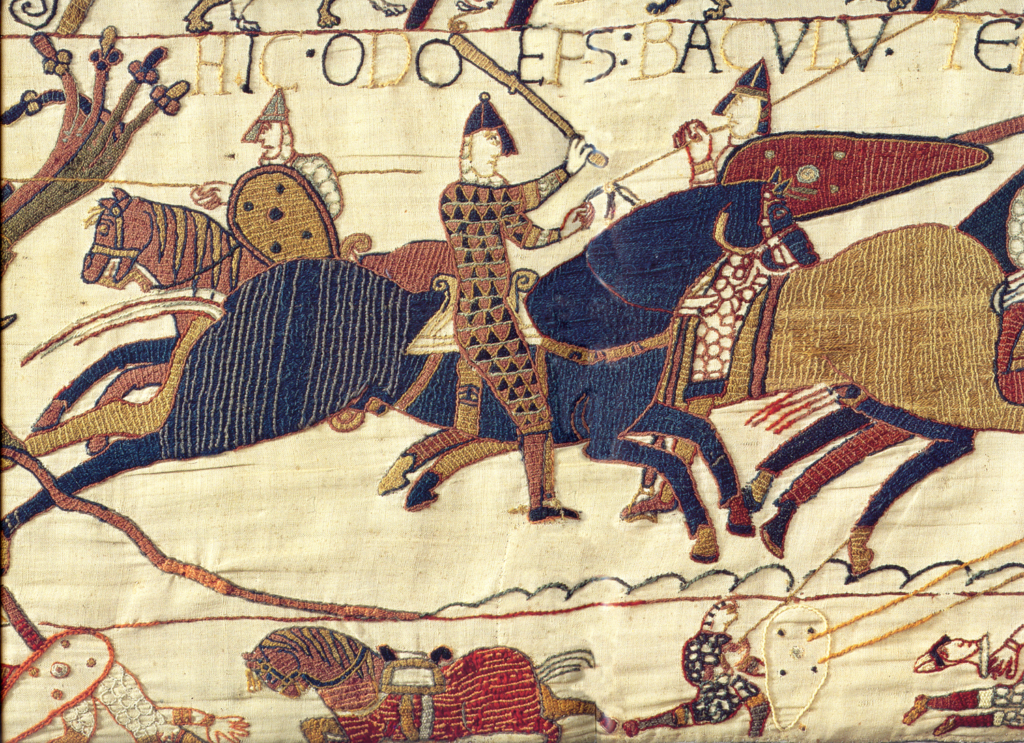
The Bayeux Tapestry, 1066, Bayeux Museum, Bayeux, France.
To begin this list, the Bayeux Tapestry felt like the perfect place to start. It is an outstanding pictorial representation of history due to its size, which measures 20 in high and is almost 230 ft long. Although it is called a tapestry, the embroidery is made of needlework sewn with wool onto linen.
The tapestry was created in the 11th century and depicts the story of William the Conqueror’s conquest of England in 1066 during the Battle of Hastings. The tapestry is presumed to have been commissioned by Odo Bishop of Bayeux, William the Conqueror’s half-brother.
Although it is the most famous tapestry in the world, there are seven more famous tapestries that have impacted art history.
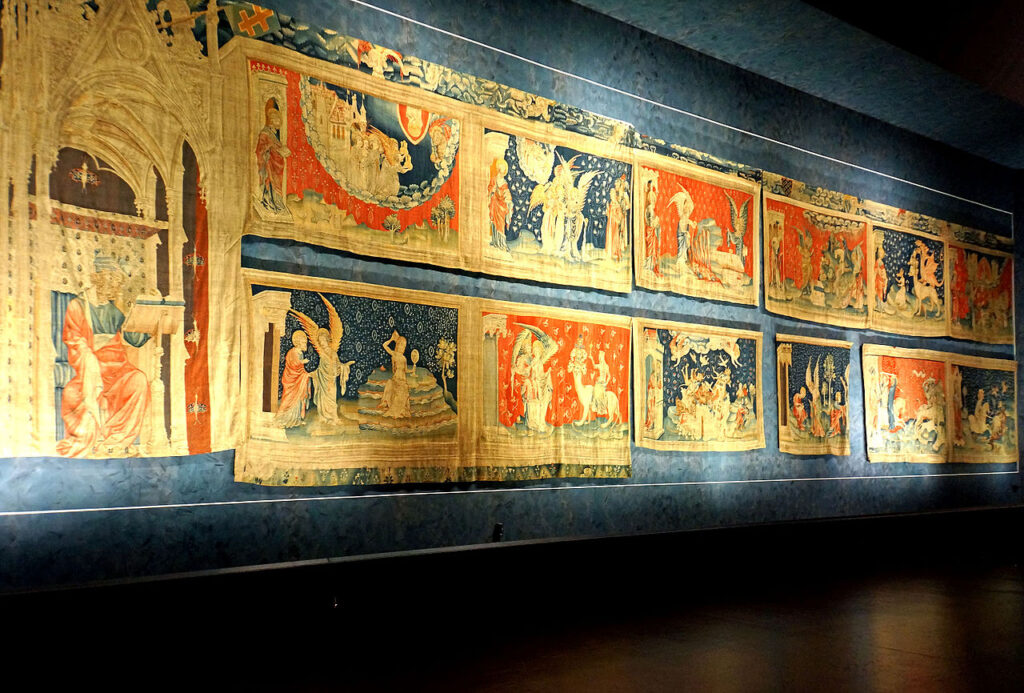
Jean Bondol and Nicholas Bataille, Apocalypse Tapestry, 1377-1382, Château d’Angers, Angers, France. Photograph by Dennis Jarvis via Wikimedia Commons (CC BY-SA 2.0).
Number two on the list would be the renowned Apocalypse Tapestry, which unsurprisingly also depicts a war. Commissioned by Louis I of Anjou in 1373, the Apocalypse Tapestry depicts the Hundred Years’ War and the Black Death. It represents a time when Europe was failing, and the world might have very well ended. Therefore, when illustrator Jean Bondol took the commission, it became a fragile work of art, both figuratively and literally.
While this tapestry is large in size, it is nothing compared to the Bayeux Tapestry. Still, it comprises six sections, each stretching an impressive 78 ft in width and 20 ft in height. Housing a total of 90 distinct scenes, the tapestry, unfortunately, lost 19 scenes, leaving only 71 intact today. The artwork vividly portrays mythical creatures like dragons, seamlessly blending them with contemporary elements of the Middle Ages, featuring knights, monks, diverse costumes, and musical instruments.
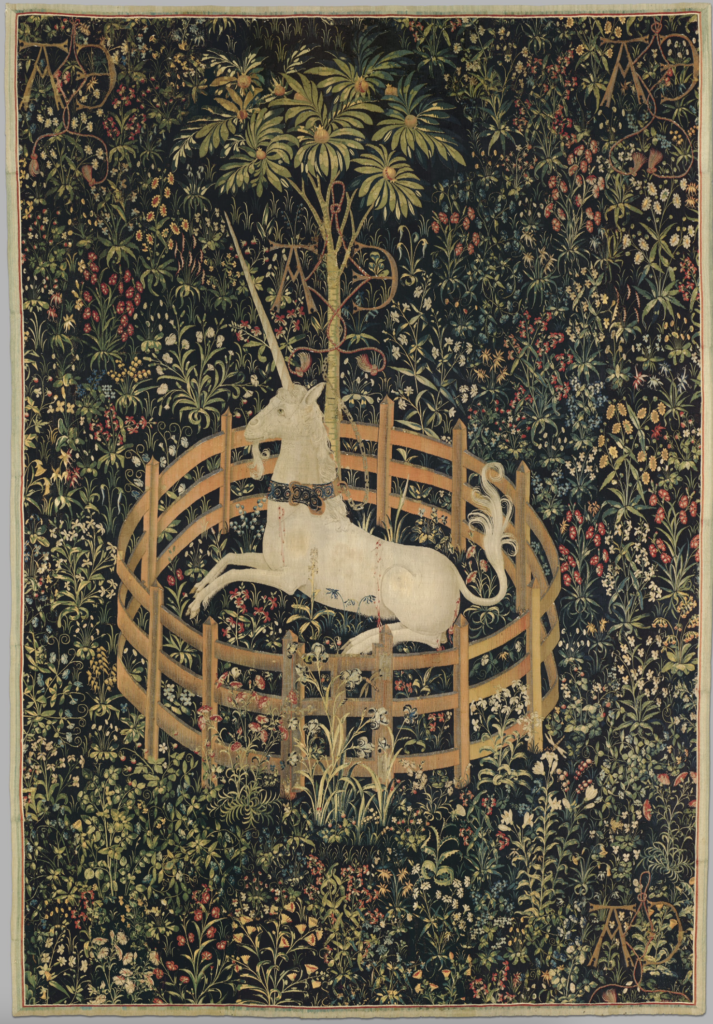
The Unicorn in Captivity, from The Unicorn Tapestries, 1495-1505, The Met Cloisters, New York City, NY, USA.
Next up is the famous tapestry set hanging on the walls at The Met Cloisters in New York City. The Unicorn Tapestries are made up of six complete tapestries and two fragments. Regarded as one of the most complex works of art, The Unicorn Tapestries were made between 1495 and 1505 during the Middle Ages. These renowned cartoons are presumed to have been designed in Paris, France, and woven in the Netherlands.
The tapestries depict various scenes of the pursuit of a unicorn from the Middle Ages. During this time the Holy Hunt of the Unicorn was a sacred story that many wealthy patrons wanted displayed in their home. The background of this set features millefleurs (known as a “thousand flowers”). This set of tapestries might be the most famous set due to its appearance in popular culture.
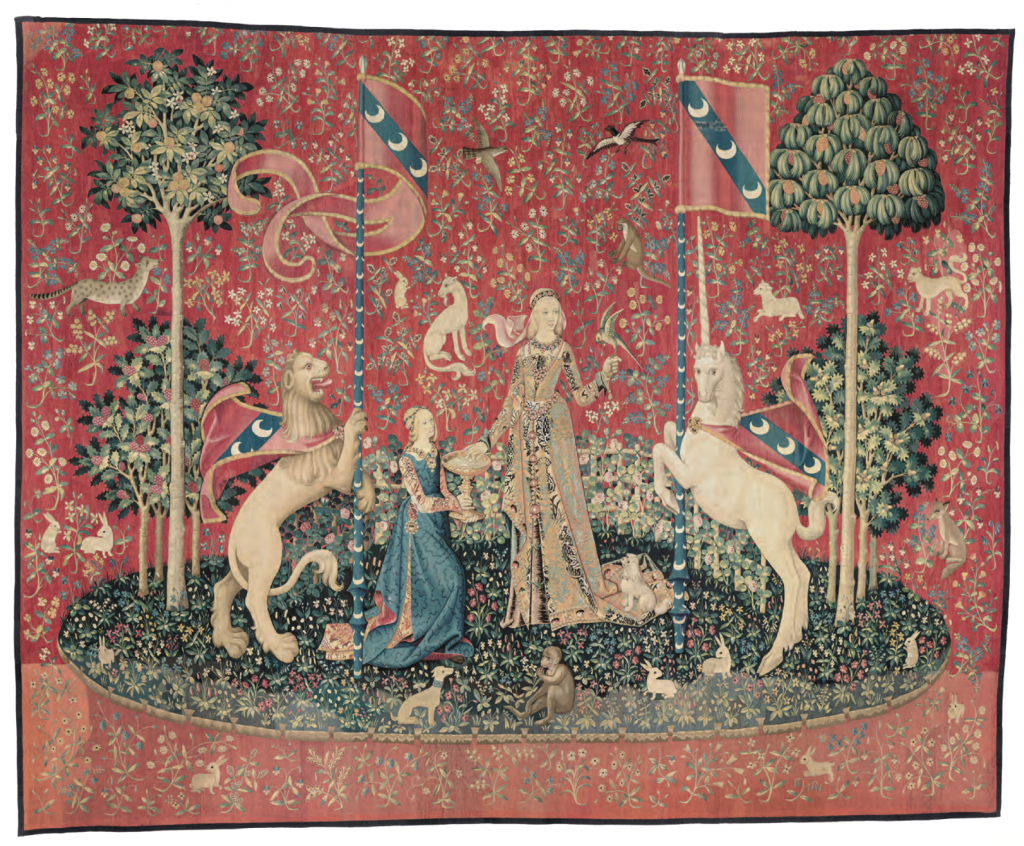
Taste from The Lady and the Unicorn Tapestries, ca. 1500, Museé de Cluny, Paris, France.
The fourth tapestry on the list is, The Lady and the Unicorn Tapestries, made towards the end of the 15th century. This set is also one of the best-known sets of medieval tapestries due to its imagery of a unicorn. In 1882, the Cluny Museum in Paris acquired a set of six tapestries. However, it took 39 years for art historians to fully understand that the first five tapestries exemplified the five senses. While this set of tapestries is similar in subject to The Unicorn Tapestries, their symbolism is completely different.
The first five tapestries are, Le Toucher (Touch), Le Goût (Taste), L’odorat (Smell), L’ouïe (Hearing), and La Vue (Sight). Along with the sixth and final tapestry entitled À Mon seul désir (To My Only Desire), whose presence within the set remains a mystery. Today, art historians believe the tapestry represents our sixth sense, the sense of the heart.
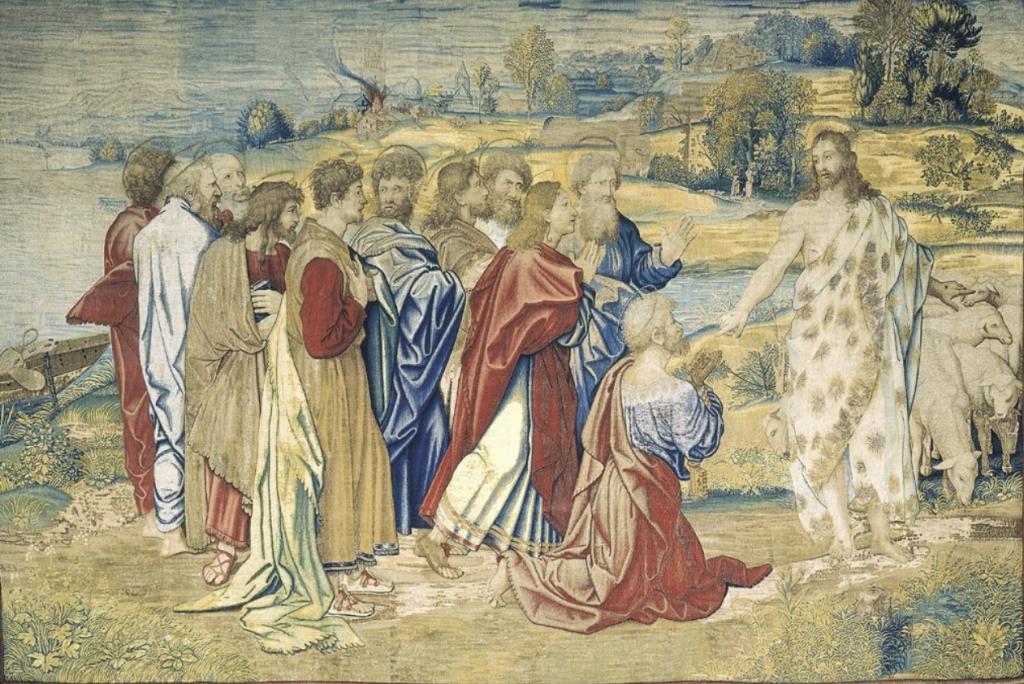
Woven in the workshop of Pieter van Aelst, designed by Raphael, Christ’s Charge to Peter, from the Acts of the Apostles, 1516-1517. Sistine Chapel. Vatican City.
Number five on our list of the most famous tapestries is extremely special since it was recently on display in the Sistine Chapel. The Acts of the Apostles, a 500-year-old tapestry set, is magnificent. Their creation began in 1515 when Leo X commissioned Raphael to create a series of paintings (known as cartoons) that would serve as models for the Acts of the Apostles’ tapestries. As the first step in a tapestry’s production, a painted cartoon would be placed behind the warp and visible between threads. Remarkably the Acts of the Apostles’ cartoons still exist today, unheard of for other surviving tapestry sets.
Leo X’s tapestries were woven between 1516 and 1521 in Brussels at Pieter van Aelst’s workshop. The tapestries were designed for the Sistine Chapel’s lower walls and emulate Leo X’s life and Catholic beliefs. They are a perfect example of religious imagery in a tapestry set.
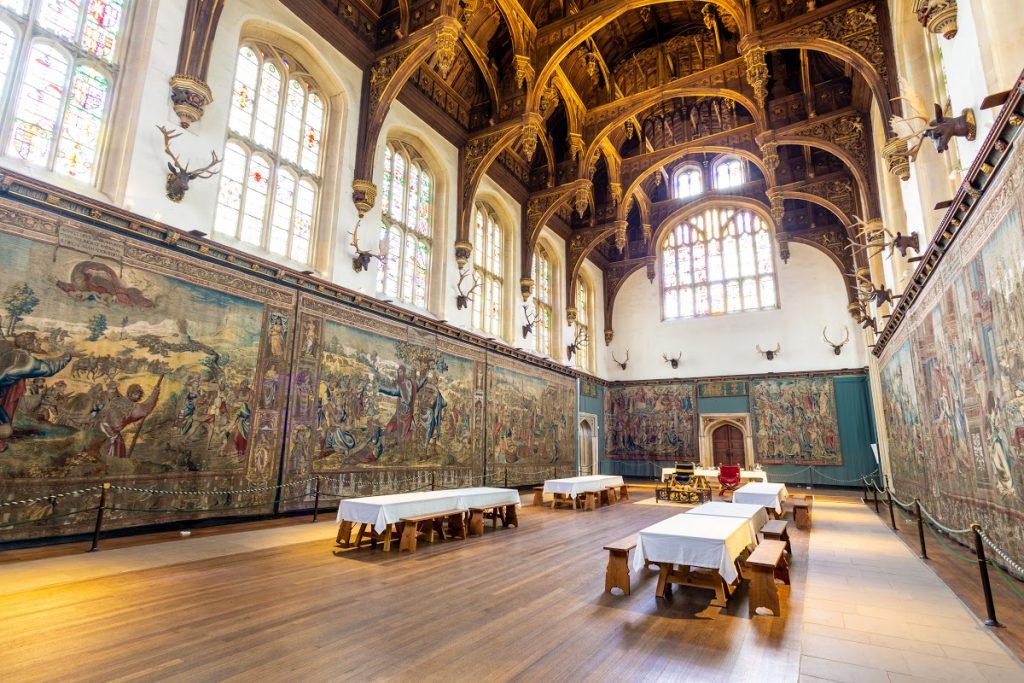
Hampton Court Palace’s Great Hall featuring the Story of Abraham tapestry set, London, UK. Photograph by Richard Lea-Hair, 2019.
This list would be incomplete if Henry VIII’s, the Story of Abraham, tapestry set was not mentioned. As one of the most distinguished tapestry collectors, Henry VIII cataloged over 300 tapestry sets during his lifetime. The tapestry panels are presumed to have been designed around 1537 by Pieter Coecke van Aelst and woven in Willem de Kempeneer’s workshop in Brussels between 1541 to 1543. While this might not seem important, the Story of Abraham series is the most impressive 16th-century tapestry set to survive in Great Britain. Mainly because of its large percentage of silk and gilt-metallic thread, making it extremely expensive!
This tapestry set is also remarkable due to its authoritative message, delicate material, and long-lasting existence. In ten scenes, the tapestries depict key events of Abraham’s life as they are told in the book of Genesis (from chapters 12 through 24). Abraham was the founder of the Hebrew nation and was called by God to leave his home and start a new kingdom. So, the imagery in the tapestry set demonstrates Abraham as a loyal and faithful servant of God. However, the message isn’t only religious, but also a political statement Henry VIII strategically wove into the tapestry.
Read more about this tapestry set here.
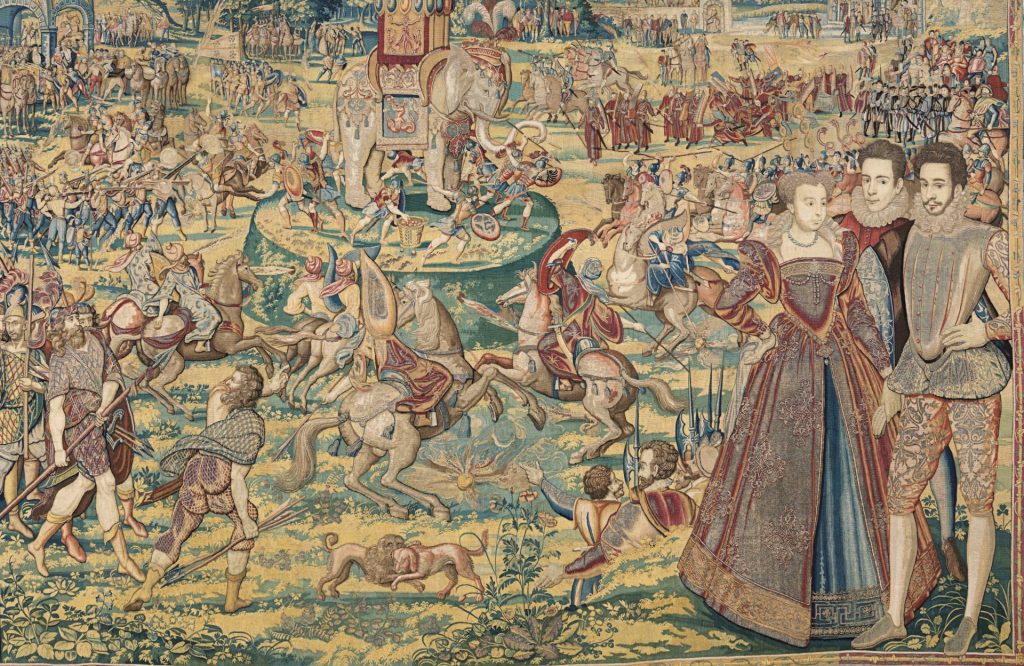
Master MGP and Antoine Caron, Elephant from the Valois Tapestries, c. 1576, Uffizi Galleries, Florence, Italy.
Another tapestry set that was made purely for political reasons was Catherine de’ Medici’s Valois Tapestries. Catherine de’ Medici (Queen of France and wife to King Henry II) commissioned the Valois Tapestries to depict the magnificent festivals at the court of France. The eight tapestries are based on designs by Antoine Caron and woven in Brussels by two unknown masters in 1576. Antoine Caron (1521-1599) was born in Beauvais, France, and was the court painter for King Henry II.
Featured in the background of each tapestry is a courtly spectacle that provides a political or symbolic function. While in the foreground of each tapestry, there are famous life-sized figures such as those of Charles IX and his siblings. These figures were recognized through princely portraits intended to be used as dynastic praise and legitimized the Valois dynasty.
Today, these famous tapestries are held at the Uffizi Gallery in Florence, Italy. In 2018, they were displayed at the Cleveland Museum of Art in Ohio, USA.
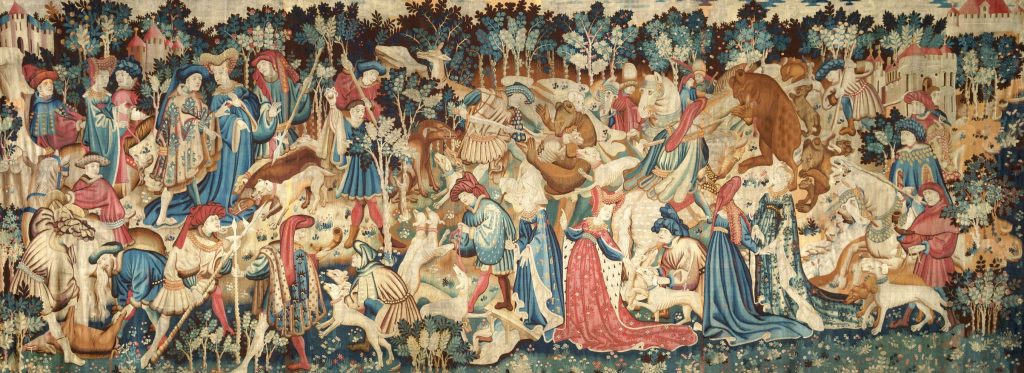
The Devonshire Hunting Tapestry: Boar and Bear Hunt, 1425-1430, probably made in Arras, France. Victoria and Albert Museum, London.
Last on the list are the Devonshire Hunting Tapestries, which consist of four large tapestries depicting scenes of hunting various animals. They were made between 1430 and 1450 in Arras (modern-day France) for the courts of France and Burgundy.
The tapestry set shows four different hunting scenes, all of which multiple people could be involved since hunting became a social event during the Middle Ages, in which both men and women could participate. This reflects the same purpose of a tapestry, showcasing both opulence and necessity. As many of the tapestries in this article have shown similarities, even the ground is decorated in a millefleur pattern resembling The Unicorn Tapestries.
Overall, the Devonshire Hunting Tapestries provide a glimpse into court life and lives of aristocrats of the Middle Ages. Like tapestries, hunting among the upper classes provided an opportunity to showcase their wealth and power.
DailyArt Magazine needs your support. Every contribution, however big or small, is very valuable for our future. Thanks to it, we will be able to sustain and grow the Magazine. Thank you for your help!